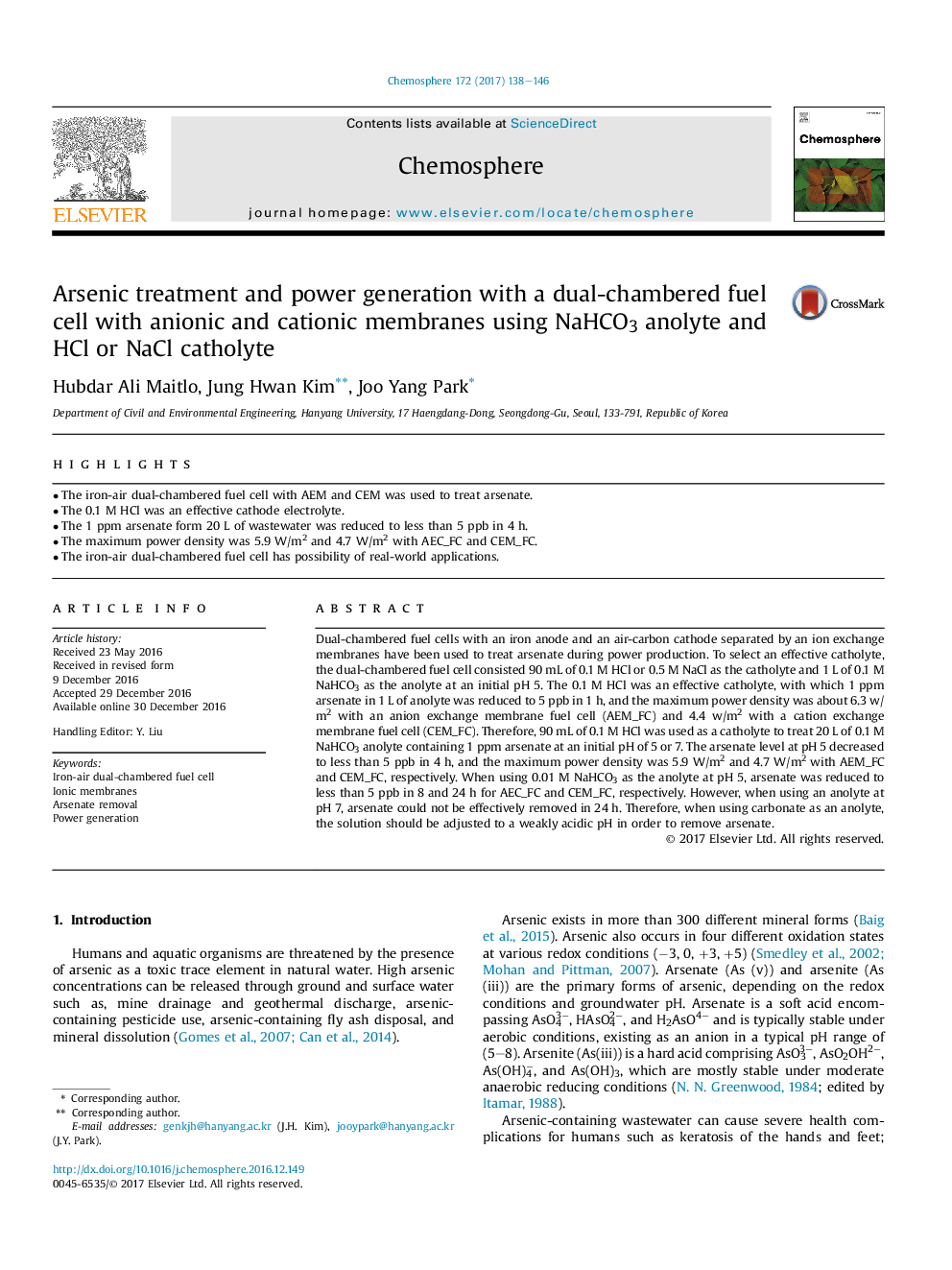| Article ID | Journal | Published Year | Pages | File Type |
|---|---|---|---|---|
| 5747099 | Chemosphere | 2017 | 9 Pages |
Abstract
Dual-chambered fuel cells with an iron anode and an air-carbon cathode separated by an ion exchange membranes have been used to treat arsenate during power production. To select an effective catholyte, the dual-chambered fuel cell consisted 90Â mL of 0.1Â M HCl or 0.5Â M NaCl as the catholyte and 1Â L of 0.1Â M NaHCO3 as the anolyte at an initial pH 5. The 0.1Â M HCl was an effective catholyte, with which 1Â ppm arsenate in 1Â L of anolyte was reduced to 5Â ppb in 1Â h, and the maximum power density was about 6.3 w/m2 with an anion exchange membrane fuel cell (AEM_FC) and 4.4 w/m2 with a cation exchange membrane fuel cell (CEM_FC). Therefore, 90Â mL of 0.1Â M HCl was used as a catholyte to treat 20Â L of 0.1Â M NaHCO3 anolyte containing 1Â ppm arsenate at an initial pH of 5 or 7. The arsenate level at pH 5 decreased to less than 5Â ppb in 4Â h, and the maximum power density was 5.9Â W/m2 and 4.7Â W/m2 with AEM_FC and CEM_FC, respectively. When using 0.01Â M NaHCO3 as the anolyte at pH 5, arsenate was reduced to less than 5Â ppb in 8 and 24Â h for AEC_FC and CEM_FC, respectively. However, when using an anolyte at pH 7, arsenate could not be effectively removed in 24Â h. Therefore, when using carbonate as an anolyte, the solution should be adjusted to a weakly acidic pH in order to remove arsenate.
Keywords
Related Topics
Life Sciences
Environmental Science
Environmental Chemistry
Authors
Hubdar Ali Maitlo, Jung Hwan Kim, Joo Yang Park,
